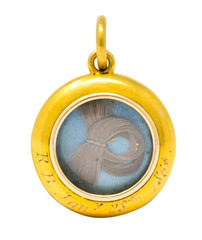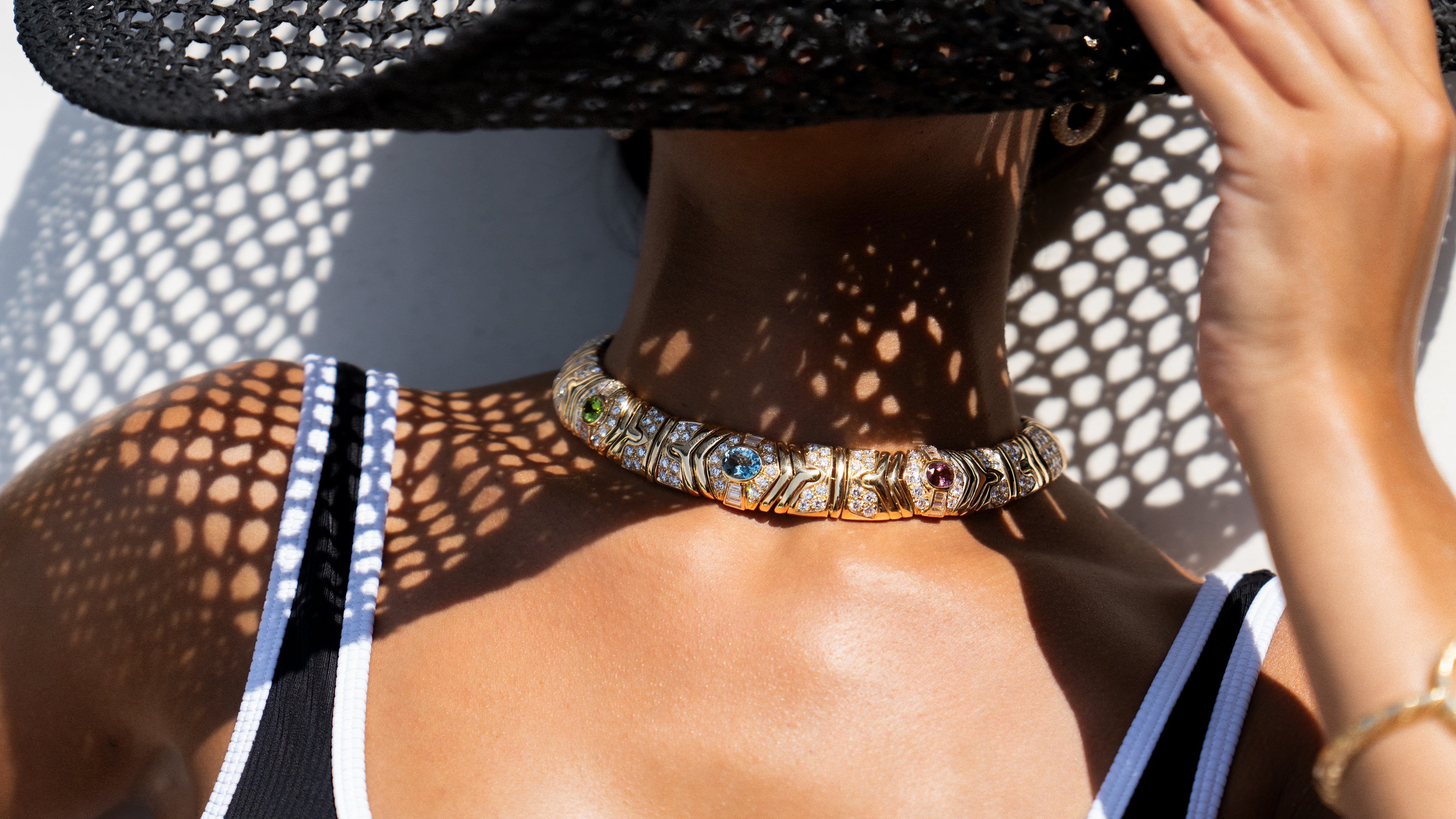Mourning Jewelry - 1800s
From the late 1700s until the dawn of the 20th Century, mourning jewelry was the most popular way to memorialize loved ones who’d passed on.
Early Mourning
Memento Mori was the precursor to mourning jewelry. These pieces, dating back to the Middle Ages, featured symbols of death such as skeletons, skulls, and coffins, and were meant as a message to the living to lead a righteous life, for one never knew when death would come calling. The words “Memento Mori” literally translate to “remember death.”
The Rise of Mourning Jewelry
From the Georgian era, the obvious way to remember a loved one was with a miniature portrait. It was also a common practice to cut hair from the deceased and put it in a locket. Sometimes the hair was incorporated into artwork that depicted a scene reminiscent of the lost loved one.
Those who could afford to do so would sometimes have a certain quantity of memorial rings made up to distribute to family and friends at the memorial service. The bands would often be inscribed with the dearly departed’s date of death and engraved with a few words of comfort.


Jewelry Types
Rings, necklaces, and brooches were the most common forms of adornment for mourning jewelry. Men could choose to wear cufflinks. Or perhaps a pocket watch fob partially composed of hair from the deceased; skillfully braided into the piece.
Materials
Mourning jewelry was often created with the addition of black enamel or by using other black materials, including onyx, jet, vulcanite, gutta-percha (a natural rubber), dark tortoiseshell or bog oak. The exception to this trend was the use of ivory and other white materials to memorialize a child or young woman who hadn’t yet married. Pearls also represented the loss of a child.
Grieving citizens were warned about sending hair to unscrupulous artisans, who were caught replacing damaged or hard-to-manage hair with that of a stranger – or even a horse. Nevertheless, due to the popularity of mourning jewelry and art, by the middle of the 19th Century, England was importing 50 tons of hair each year to supplement the locks of the deceased.
Cameos were carved using coral, agate, or shell for use in rings, necklaces, and brooches.


Mourning or Fashion Jewelry?
The color black isn’t the only determining factor for mourning jewelry. Pieces inscribed “in memory of” on the back present a clear indication. Many times, however, there was no personalization of a mourning piece, as those grieving had little time to have the jewel crafted before the mourning period started. Often, generic items were purchased from stores that specialized in bereavement attire. These pieces were known to have been passed along from bereaved to bereaved so that personalization would have rendered them a one-time-only memento, a luxury many families could not afford.
Symbols and Motifs
Specific motifs and symbols could exist within mourning jewelry.
- Anchors were said to signify hope.
- Funeral urns and images of mourners weeping at gravesites were common Victorian symbols, as were weeping willows, winged cherubs, and clouds.
- Crosses worn as pendants were crafted in a variety of black materials as symbols of undying faith. Unlike the skulls and skeletons of the Middle Ages that portended a judgmental god, crosses and images of angels invoked the image of a tender, more forgiving father.
- Oak sprays, particularly those that displayed one empty acorn cup, were carved into mourning pieces.
- Flowers were often used, especially forget-me-nots and lily-of-the-valley, said to symbolize the tears of the Virgin Mary.
- Seed pearls represented tears of grief for any passing.


Victoria Mourns
The death of Prince Albert was a devastating life-change for Queen Victoria. She mourned her husband for the remaining 40 years of her life – and helped elevate bereavement to new heights. She wore black always and insisted on wearing her husband’s mourning ring all the rest of her days.
Mourning Protocol
There were different colors for the various stages of grief. To observe the traditional public mourning time during the Victorian era, you would wear a necklace or ring that matched the corresponding clothing you were wearing for that stage of grief; and it was okay to wear other jewelry, too. On the other hand, if you were following the more stringent Victorian mourning procedure, you were permitted to wear only mourning jewelry for the first 2-3 years of deep mourning. For the final stages of grieving, darker colors such as grey, purple, and blue would be reintroduced to the mourner’s wardrobe.
This and That
- While much of the black jewelry produced from the mid- to late-1800s was created for mourners, black jewelry was also very stylish at this time. Jet, for example, was popular in fashion jewelry, particularly the more affordable French jet, which was very dark red or black glass. Naturally mined jet was more durable and consequently pricier.
- Bakelite jewelry, mainly when fashioned into cameo necklaces, has sometimes been mistaken for mourning jewelry. These pieces are considered Victorian revival as they were produced in the 1930s.
- When the deceased’s hair was coiled and placed inside a ring under crystal, it was called a “collar.”
- As photographs came into vogue, it was inevitable they would become part of mourning jewelry, particularly lockets.
- Sadly, it was the high infant death rate and the shorter lifespan of the populace that made for a brisk trade in mourning jewelry.
A Revival of Sorts
Although mourning jewelry long ago ceased to be popular, Memento Mori jewelry has made a comeback. Skulls and skeletons are featured in many modern jewelry collections, perpetuated, in part, by the rise in popularity of the Day of the Dead celebrations.
